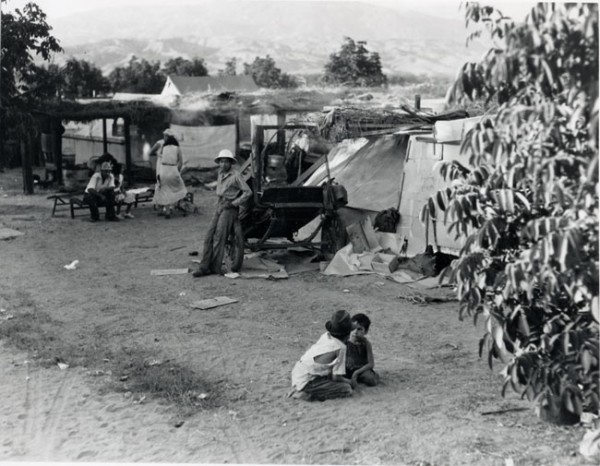Depression Era: 1930s: Repatriation for Mexican & Filipino Farm Workers
 Mexican apricot pickers. June 22, 1935. Dorothea Lange, photographer. Gelatin silver print. Collection of Oakland Museum of California. Gift of Paul S. Taylor.
Mexican apricot pickers. June 22, 1935. Dorothea Lange, photographer. Gelatin silver print. Collection of Oakland Museum of California. Gift of Paul S. Taylor.
"[When] they have finished harvesting my crops, I will kick them out on the country road. My obligation is ended."
- California farmer
When shelters were provided for migrant farm workers, they were usually spartan shacks. Dirt floors were common, as was the lack of functional walls, roofs, and doors. Camps would only rarely have running water. Usually, water had to be carried from a river or ditch, the presence of human or animal waste and farming chemicals in the unfiltered water a constant danger. Often, farm owners charged rent even for such inadequate and dangerous shelters. This photograph, however, is not just an image of the past. Today, farm workers are still fighting farm owners who do not provide basic, humane living and working conditions.